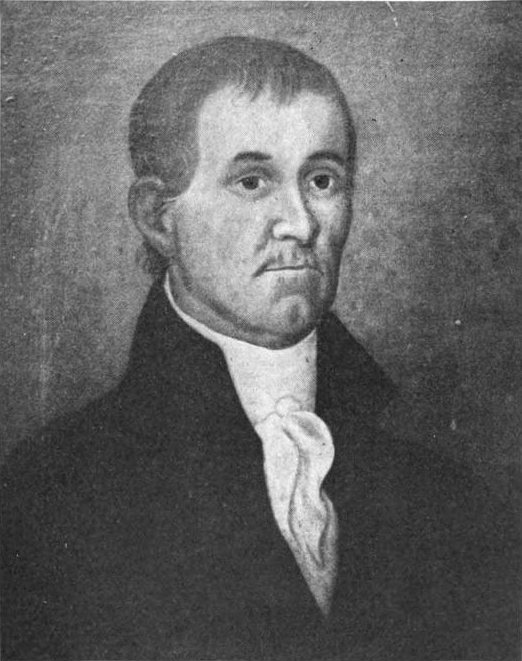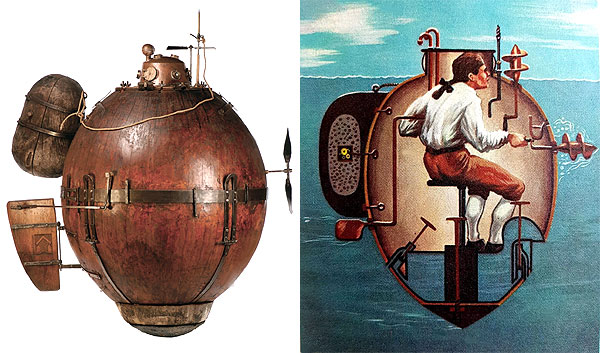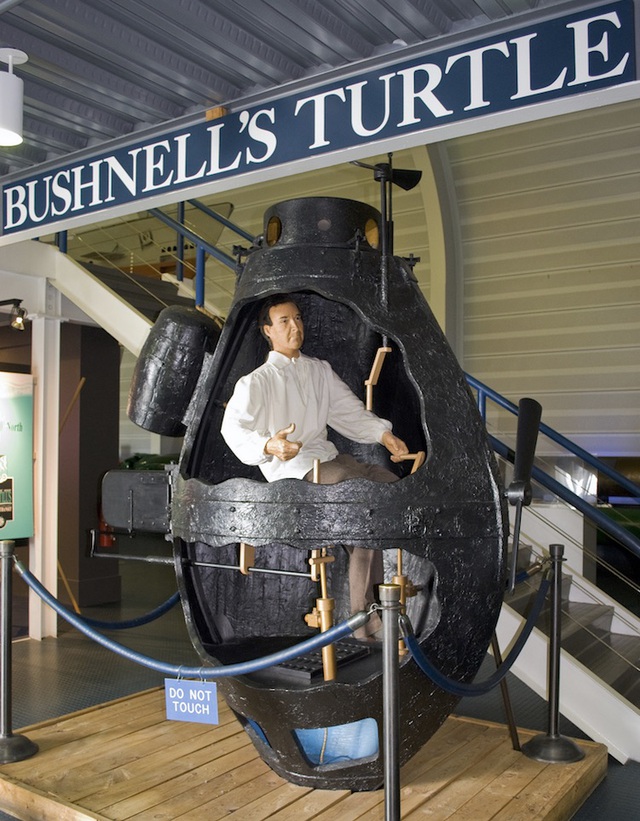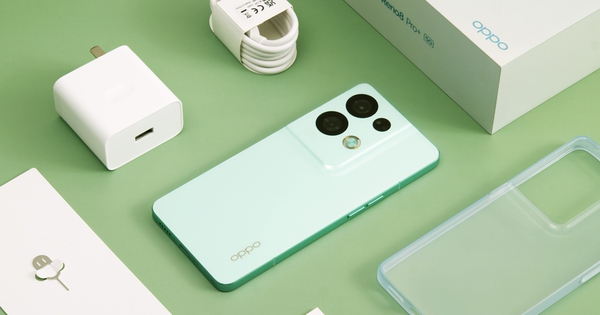Little known facts about David Bushnell and humanity’s first submarine

David Bushnell, American inventor, is famous as the father of the submarine.
August 30, 1740: David Bushnell was born in Westbrook, Connecticut. Years later, circa 1775, Bushnell experimented with detonating gunpowder under water while studying at Yale University. Basically, he created the first time bombs. Bushnell then spent his life savings building a manned submersible capable of deploying weapons, called the Turtle.
Turtle, a one-man spherical submarine made of wood, brass, bronze… The purpose of the turtle submarine is to attack British Royal Navy ships that were occupying American ports during the War of Independence. She was founded by the United States, and although unsuccessful, she now holds the proud position of being the first operational submarine in wartime.

While at Yale, Bushnell demonstrated that gunpowder could explode underwater. He used this knowledge not only in building underwater mines but also in creating floating torpedoes that could explode on contact. Working with wealthy New Haven inventor, watchmaker and brass minter Isaac Doolittle, he also co-developed the first mechanically actuated time bomb as well as the first propeller. He combined these ideas by creating a Turtle designed to attack ships by attaching time bombs to the hull, while also using hand drills and ship drill bits to penetrate the hulls.
September 6, 1776: The turtle ship was deployed for the first mission against HMS Eagle. The idea was to “park” the sub underneath the boat, drill a hole in the hull and then stuff a barrel of gunpowder into the hull. However, in practical conditions, the drill cannot drill through the hull. Operator – Sergeant Ezra Lee later abandoned the turtle ship, although he managed to detonate the gunpowder barrel.
During the next week, Turtle made several more attempts to sink British ships in the Hudson River, but each failed due to the lack of skill of the operator. Only Bushnell was actually able to successfully perform Turtle’s complex functions, but because of his ill health, he was unable to maneuver the ship during any of its combat missions. At the Battle of Fort Lee, Turtle finally succumbed when the American ship carrying it was sunk by the British.
After that, many other attempts were made, but the turtle ship still encountered failures, so Bushwell decided to give up the Turtle.

On August 13, 1777, after abandoning Turtle, Bushnell turned his attention to mining. Around this time, however, he built two floating mines and sent them to the battlefield as a special gift to a British fleet at Black Point Bay, Connecticut. A mine hit a small boat near Cerberus and exploded killing four sailors. However, his idea this time failed because the main ship of the fleet – HMS Cerebus promptly discovered and cut off the rope carrying mines.
In 1778, he launched what is known as the Battle of Kegs, in which a series of mines were dropped into the Delaware River to attack British ships anchored there, but this was another defeat because The mines accidentally exploded, killing two curious boys and alarming the British.
June 8, 1781: General George Washington appointed Bushnell as an army engineer, and the torpedoes he built destroyed the destroyer Cereberus and devastated many other British ships. After the war, he became commander of the United States Engineering Corps stationed at West Point.
Bushnell served in the Army until his discharge on June 3, 1783. He later became an original member of the Connecticut Society of Cincinnati, an organization founded by officers who were veterans of the Cincinnati. Continental Army and Navy.
At some point after the Revolution, Bushnell was awarded a medal by George Washington.

A full-sized model of David Bushnell’s turtle ship is on display at the U.S. Navy Submarine Force Library and Museum in Groton, Connecticut.
After peace was declared, he returned to Connecticut, where he lived until 1787 when he suddenly moved to France. His activities in France are unknown although it is speculated that he may have collaborated with inventor Robert Fulton to develop a design for a submarine.
In 1803 Bushnell settled in Warrenton, Georgia and changed his name to David Bush. He has taught at the Warrenton Institute and practiced medicine. He died in Warrenton in 1824 or 1826 and was buried in the town cemetery in an unmarked grave. There is a cemetery at Warrenton Cemetery in his honor.
In 1915, the United States Navy named the submarine USS Bushnell (AS-2) after him and it was launched at Bremerton, Washington. Bushnell served in World War I and was renamed USS Sumner in 1940 and was present during the Japanese attack on Pearl Harbor on 7 December 1941. She was used as a survey ship. during World War II and was decommissioned in 1946.
On September 14, 1942, another tender for a submarine of the same name USS Bushnell (AS-15) was initiated. Bushnell served in World War II and was subsequently flagship of Submarine Squadron 12 at Key West, Florida from 1952 until she was decommissioned in 1970.
In 2004, the Georgia House of Representatives passed a resolution declaring August 30, 2004 as David Bushnell Day in Georgia.
at Blogtuan.info – Source: genk.vn – Read the original article here

